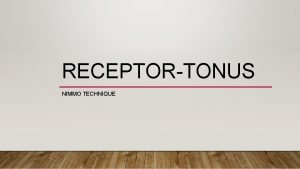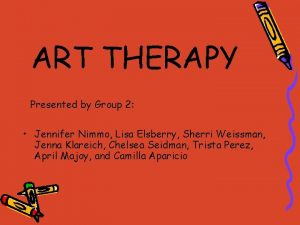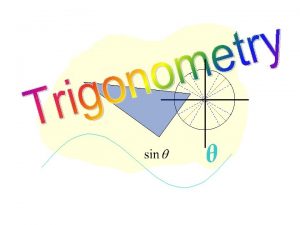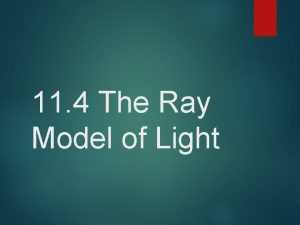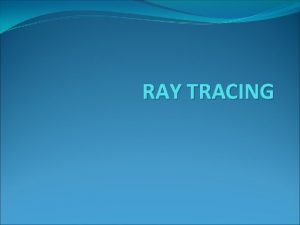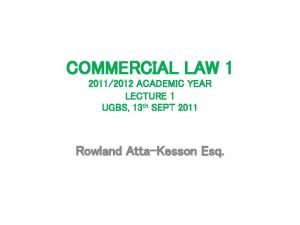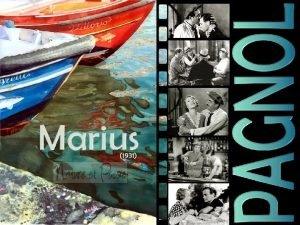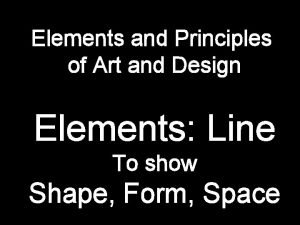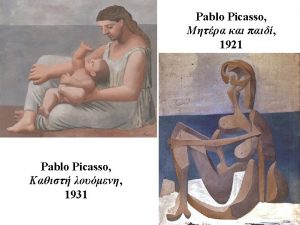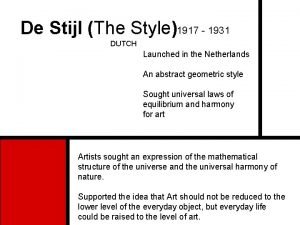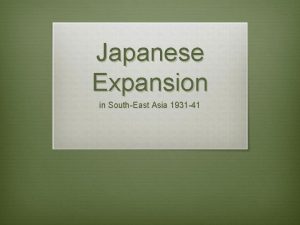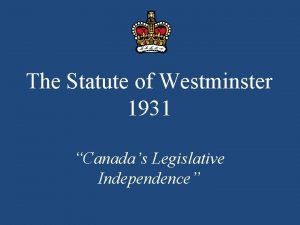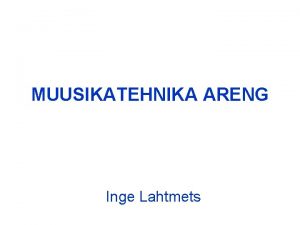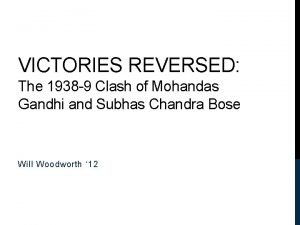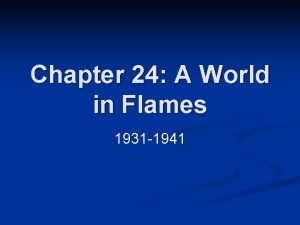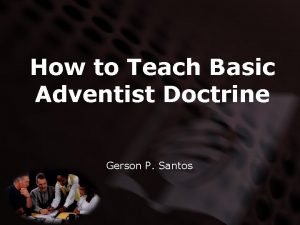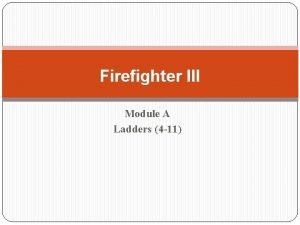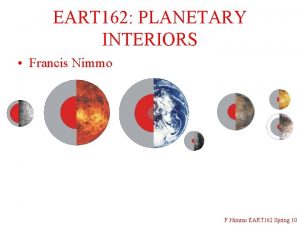RECEPTORTONUS NIMMO TECHNIQUE RAY NIMMO DC PALMER 1931




















- Slides: 20

RECEPTOR-TONUS NIMMO TECHNIQUE

RAY NIMMO DC PALMER 1931


EARLY DEVELOPERS • Hans Krus: 1938: Treated Bonnie. Pruden for neck pain during mountain climb • Bonnie Pruden 1976: Manual therapy using elbows, thumbs, knuckles • Janet Travell !942” Spray and Stretch, Injections

TRIGGER POINTS • Term coined by Janet Travell in 1942: • Pain caused by discrete hyperirriatble points in skeletal muscle or fascia not caused by acute trauma, inflammation, degeneration, neoplasm, or infection • Pain felt as a nodule or band in the muscle and a twitch response can be elicited on stimulation. • Palpation of a TP reproduces the patients complaint of pain and radiation to the muscle harboring the TP.

ACTIVATION OF A TRIGGER POINT • Acute or chronic muscle overload • Psychological Distress • Trauma • Radiculopathy • Smoking • Infection

TRIGGER POINTS • Trigger Points form in muscles due to excessive release of acetylocholine producing sustained contraction of a muscle • Trigger Points: Increase Acetylcholine, Increase Norepinephrine, increase serotonin, decrease PH. • Sustained contraction causes Ischemia • Pain pathways follow particular nerve pathways.

INCIDENCE • 75 - 95% of regional pain caused by myofascial pain • 80 -90% of trigger points overly acupuncture points and all overly fascial planes. • Biopsy showed hyperirritable and electrically active muscle spindles • 255 programable trigger points • A. Active • B. Inactive • C. Latent

CAUSE OF SHOULDER PAIN • Mechanical: Impingement RC, Bursa • Pathological: Rotator cuff Tear, Labral Tear • Neurological: Cervical Neuropathy • Myofascial: Trigger Points • Visceral Disease

TRIGGER POINTS • Hyperirritable neuromuscular point that is painful when compressed and is associated with dysfunctional neuromuscular circuits. • Refers pain to a distal and predictable area. • By pressing on a trigger point the spinal cord produces pain reducing chemicals that relax the muscle and reduce the pain from the referral pattern

ALPHA MOTOR NEURONS • Most muscle contraction is due to increased alpha motor neuron activity in the extrafusal fibers. • Causes: Increased Calcium ions in tissue, Fibrosis, Ischemia, Referal pattern consistent and predictable • Treatment Goal: Block Alpha motor neuron activity, force Calcium ions out of tissue, block myotatic referal


TRIGGER POINT REFERRAL PATTERNS • Supraspinatus: Deep pain in mid deltoid with radiation down arm to elbow • Biceps Brachi: Shoulder, Posterior Scapula • Teres Major/Minor: Posterior Deltoid, Lateral Arm • Subscapularis: Posterior Shoulder, Posterior Arm, both sides of wrist. • Serratus Posterior Superior: • Latissimus Dorsi: Inferior Scapula. Posterior Arm, Hand. • Triceps: Posterior Shoulder, Lateral Forearm. Tennis Elbow

SHOULDER TRIGGER POINTS


HELENE LANGEVIN MD, PH. D UNIVERSITY OF VERMONT MEDICAL SCHOOL

TECHNIQUE GOALS • Ischemic Pressure: • Neurological: Break myotatic reflex • Physical: Move calcium ions out of the tissue

TECHNIQUE METHODS • Manual Technique: Pressure to patients tolerance. Nimmo taught “ As much as you could tolerate on your eyeball. ” 7 seconds twice. Treatment eventually evolved to use up to 40 pounds of pressure on Lumbar spine. ( I never use that technique). Follow the treatment with a muscle energy technique to lengthen out the muscle. • Spray and Stretch: Ethylchloride ( no loner used due to impact on environment ) • Dry Needling: Use of saline of analgesic did not improve outcome over placebo.


 Nimmo technique
Nimmo technique Francis nimmo
Francis nimmo Jennifer nimmo
Jennifer nimmo Tan 30 degrees
Tan 30 degrees Ray ray model
Ray ray model Ray casting vs ray tracing
Ray casting vs ray tracing Sudantenland
Sudantenland Clements v london and north western railway
Clements v london and north western railway Marius (1931)
Marius (1931) Charles sheeler, classic landscape, 1931.
Charles sheeler, classic landscape, 1931. Electric guitar timeline
Electric guitar timeline Gobiernos militares de el salvador 1931 a 1979
Gobiernos militares de el salvador 1931 a 1979 Pablo picasso 1931
Pablo picasso 1931 De stijl 1917-1931
De stijl 1917-1931 Growth of the japanese empire, 1931–41
Growth of the japanese empire, 1931–41 Statute of westminster
Statute of westminster Fonograaf
Fonograaf Indian flag in 1931
Indian flag in 1931 A world in flames 1931-1941
A world in flames 1931-1941 Sda fundamental beliefs 1931
Sda fundamental beliefs 1931 Nfpa 1931
Nfpa 1931
